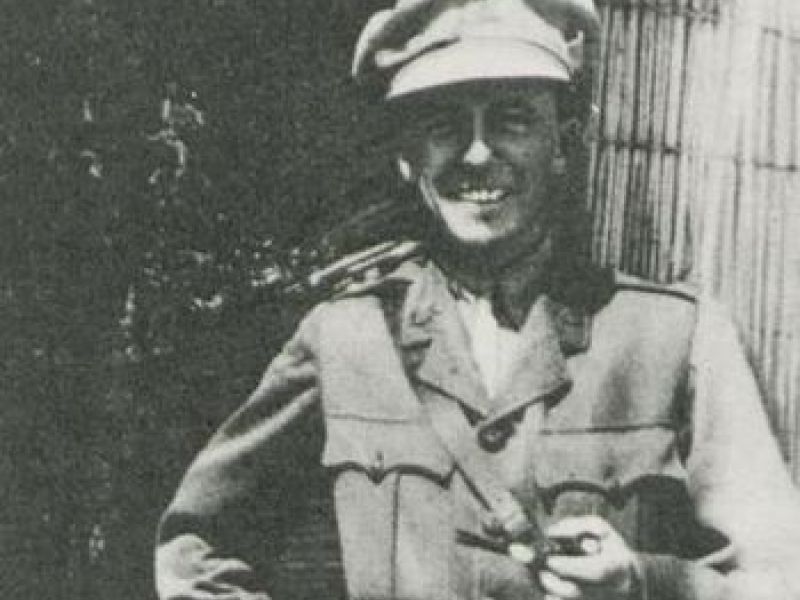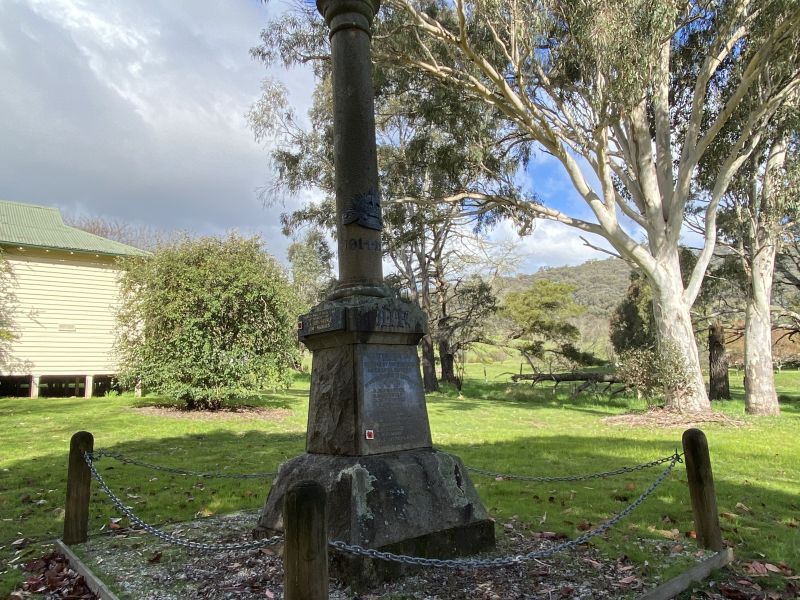Norman MacDonald
Norman was born at Granya on the 22nd of November, 1892. He was the sixth of eleven children of Hugh and Mary Grace (née Cross) MacDonald. During his younger years, Norman attended Granya, Shepparton and Geelong State Schools. He joined the Bank of New South Wales at the Geelong Branch on the 11th of August 1911. In May of 1912 he was transferred to the Albury and in February of 1914 the Wodonga Branch.
Norman enlisted on the 24th of September, 1914. His skills in handling other people were recognised and he was given the rank of Sergeant one week after enlisting. He was allocated the Regimental Number 650 and placed in F Company of the 13th Battalion The unit embarked on HMAT A38 Ulysses at Melbourne on the 22nd of December, 1914. The Ulysses would be the flagship of the second AIF convoy. It would be slightly smaller than the first convoy and, due to the threat-free situation in the Indian Ocean, would be a more fragmented operation than the first convoy.
The 13th Battalion, along with the 14th, 15th and 16th Battalions formed the 4th Brigade and was commanded by Colonel John Monash. Upon arriving in Egypt it became part of the New Zelanad and Australian Division. The brigade landed at ANZAC Cove late in the afternoon of the 25th of April. Between May and August the 13th Battalion was heavily involved in establishing and defending the ANZAC front line. In August the 4th Brigade attacked Hill 971. Norman appeared to have come through the Gallipoli campaign without being wounded or evacuated ill. Just prioir to leaving the peninsula, Norman was promoted to 2nd Lieutenant.
After returning from Gallipoli, he was placed in charge of No. 4 Company of the 1st Imperial Camel Corps with a force watching the Senussi at a point abut 400 miles south-west of Cairo. He remained in the ICC until being admitted to hospital at Mareibra on the 2nd of September with itiris in his right eye. Although he rejoined his unit three weeks later, the infection in his eye develeoped into a coronal ulcer. It was recommended that he rejoin his unit in France where the climate was cooler.
However he was first sent to England on the HT Dunlace Castle, where he was admitted to the 3rd London General Hospital. This allowed him to receive proper medical care for his infected eye. In early December of 1916 he was discharged from hospital and sent to the No. 1 Convalescent Depot at Perham Downs. Norman spent over two months at perham Downs regaining his physical fitness and being trained in readiness for trench warfare on the Western Front.
Norman saw the new year of 1917 by being promoted to Captain and admitted to the New Zealand Hospital at Codford, although the reason for the hospital visit is not recorded. On the 26th of January he proceeded to France to rejoin the 13th Battalion in the field. One week later he was reported to have been killed in action.
The Bank of NSW Roll of Honour describes the fate of Captain Norman MacDonald.
“A German trench, known as “Stormy Trench,” had already been attacked eight times without success. On the 4th of February, 1917, the ninth attack was entrusted to two companies of the 13th Battalion under Captain (now Lieutenant-Colonel) H.W.Murray and Captain Macdonald. Leading his section of the attack Captain Macdonald went right ahead of his men in order to fire his flare for the barrage to lift, and on jumping into the trench after him his men found him lying dead with a bullet through his forehead. Captain Murray, who held on with great bravery against artillery and three counter attacks, obtained the objective and deservedly won the Victoria Cross.”
Norman was buried in the Warloy-Baillon Communual Cemetery Extension. He is also remembered on the Australian War Memorial Roll of Honour, the Granya War Memorial, the Bank of New South Wales Roll of Honour Book, the Carpook Church Roll of Honour, and the Carpook State School Roll of Honour. For his service, he was awarded the 1914-1915 Star, the British War Medal and the Victory Medal.

 Stephen Learmonth
Stephen Learmonth